Disclosure: This post contains affiliate links. If you click through and make a purchase, I may earn a small commission at no extra cost to you. Thank you for supporting Mythic Minis Studio! For more information read my full disclosure.
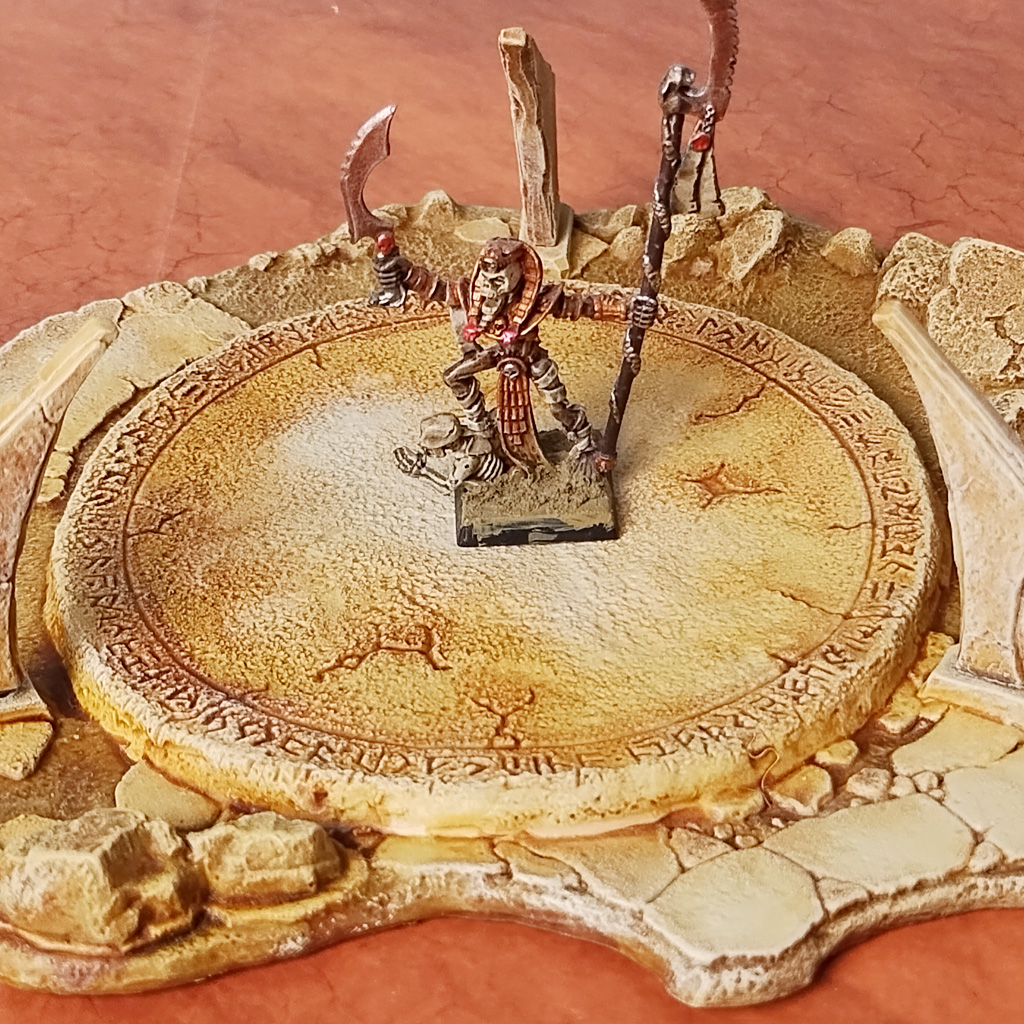
Today we’re going to paint the Arcane Circle by Reaper Minis. The Arcane Circle is compatible with various tabletop gaming systems and can be used to enhance the visual appeal and immersion of gaming environments involving magic and the arcane.
Terrain pieces add strategic depth to game-play by introducing obstacles, cover, and other environmental factors that players must navigate. Different terrain types can impact movement, line of sight, and tactical decision-making, thereby forcing players to adapt their strategies accordingly.
In addition, terrain pieces like the Arcane Circle can contribute to the thematic atmosphere of the game by setting the scene and establishing mood. Scenery can create storytelling opportunities allowing game masters to visually convey narrative elements and plot points.
Welcome to this tutorial on how to paint the Arcane Circle by Reaper Minis.
The Arcane Circle is a good quality resin model kit. Moreover, it is especially easy to paint using the base-coat, shade, and dry-brushing techniques within this painting guide.
Materials Needed to Paint the Arcane Circle
- Terrain piece model
- Paint Palette or Wet Palette and Water Cup
- Primer: Citadel Wraithbone
- Brushes:
Citadel: Medium Base Brush
Citadel: Medium Dry Brush
Citadel: Medium Shade Brush - Paint Sealer: Dullcote Testors Spray Lacquer
- Acrylic Paint List:
Primer: Wraithbone
Zandri Dust
Seraphim Sepia
Ushabti
Screaming Skull
Wraithbone (base)
Preparing the Arcane Circle for Painting
In this guide, we assume that you have prior experience with building plastic/resin models, and our focus will primarily be on the painting process. If you’re new to model building, we invite you to explore our guide on How to Prepare & Assemble Miniatures.
Let’s dive into the artistry of miniature painting and unleash your creativity!
Priming the Arcane Circle
Not sure where to start? Check out our Guide on How to Prime Miniatures!
We’re going with an Eastern Mediterranean concept for our Arcane Circle. You may enjoy a more quintessential medieval color scheme in which the concepts in this guide will also work. Check out our guide on how to choose colors for miniature painting.
Wraithbone Primer is a perfect warm-white to prime our entire terrain piece. On about half of our model, the Wraithbone Primer will also act as our base coat.
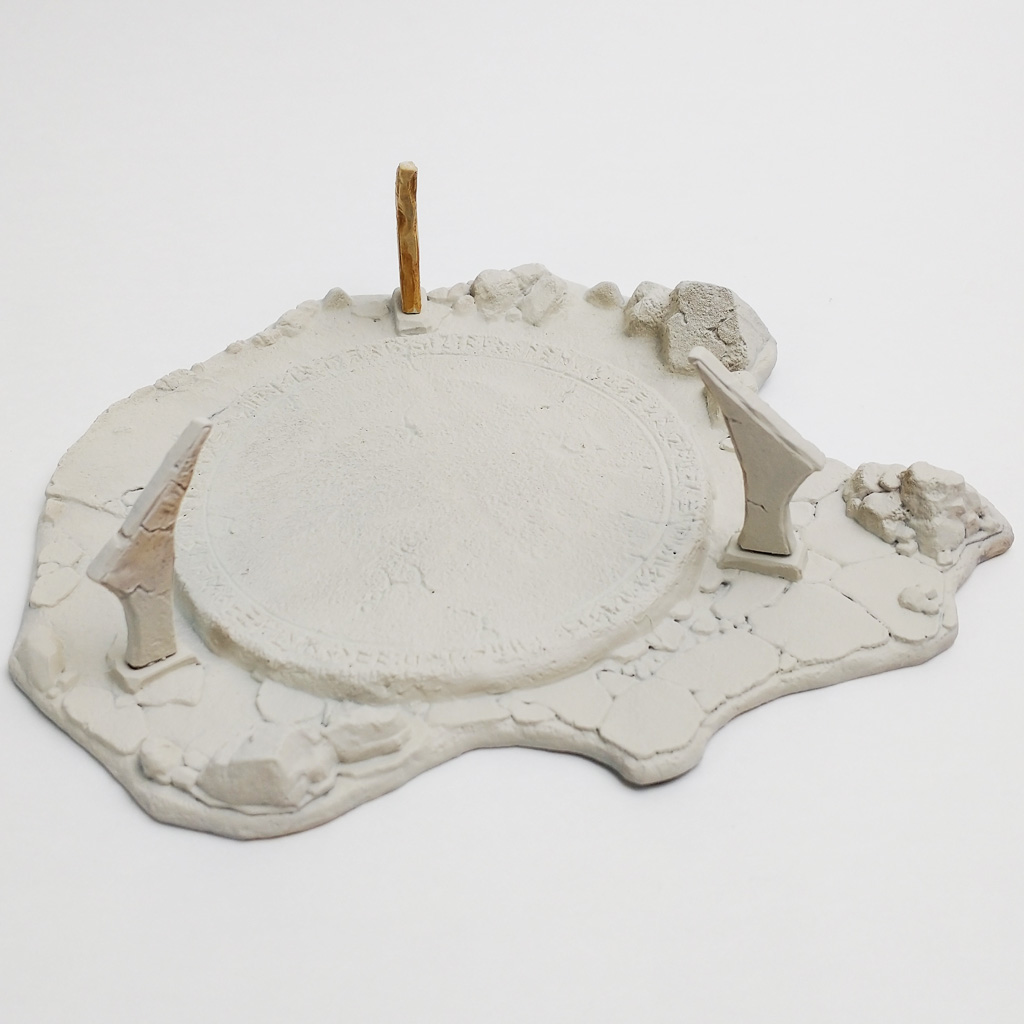
Base Coat Paint the Arcane Circle
Looking at the model, there is distinction between natural ground and a crumbling stone structure. We can differentiate these materials by using Zandri Dust on the Earth and leaving the Granite or White-Limestone structure the primed Wraithbone color.
You’ll need:
- Base Coat Zandri Dust on all of the Earth parts of the model.
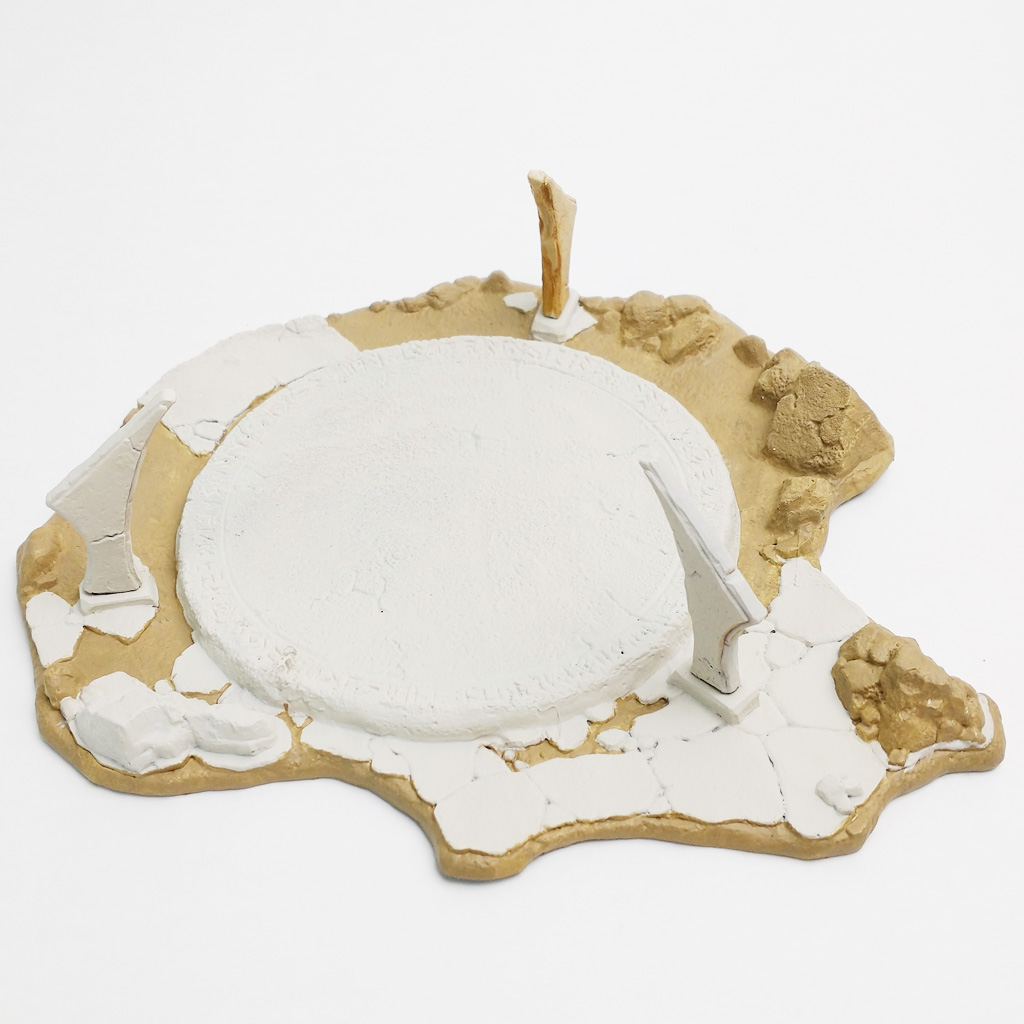
Shade Paint the Arcane Circle
If you’re new to model painting, specifically about shade painting, we invite you to explore our beginner’s guide: Coming Soon!
While shading is a great way to darkened recessed areas of the models and subsequently causing the raised details to pop, the adverse side affect to shading is the coffee staining that occurs on the raised, flat surfaces.
Typically, we have to go back and layer color back over those areas that we don’t want to have been darkened by the shade, but today, we’re going to use the coffee staining properties of shade paints to our advantage!
You’ll need:
- Using a Medium Shade Brush, paint a coat of Seraphim Sepia all over the model
Tip: You can apply the shade thicker in the Runes, cracks between stones, or in some of the more recessed areas. Likewise, you can gently brush away some of the shade to show weathering or wear-patterns on the stones.

Layer Painting the Arcane Circle
If you’re new to model painting, specifically about dry brushing, we invite you to explore our beginner’s guide: Coming Soon!
Typically, layer painting is used to bring color back up from the shading process, add color brightness and intensity to areas of the model, and to make those color transitions smooth. The fun part about painting scenery and terrain pieces is that we can often do those things with a simple technique and a fairly broad brush – dry brushing!
You’ll need:
- Using a medium to large dry brush, apply a fairly heavy layer of Ushabti all over the model.
This is going to be a transition or blending color up to your top level (brightest) highlights of Screaming Skull and Wraithbone (base). You don’t have to be uniform with this step at all. Randomizing the heaviness and lightness of your dry-brushing will add the illusion of texture to the terrain. - Using a medium dry brush, apply a light layer of Screaming Skull on the earth of dirt parts of the model.
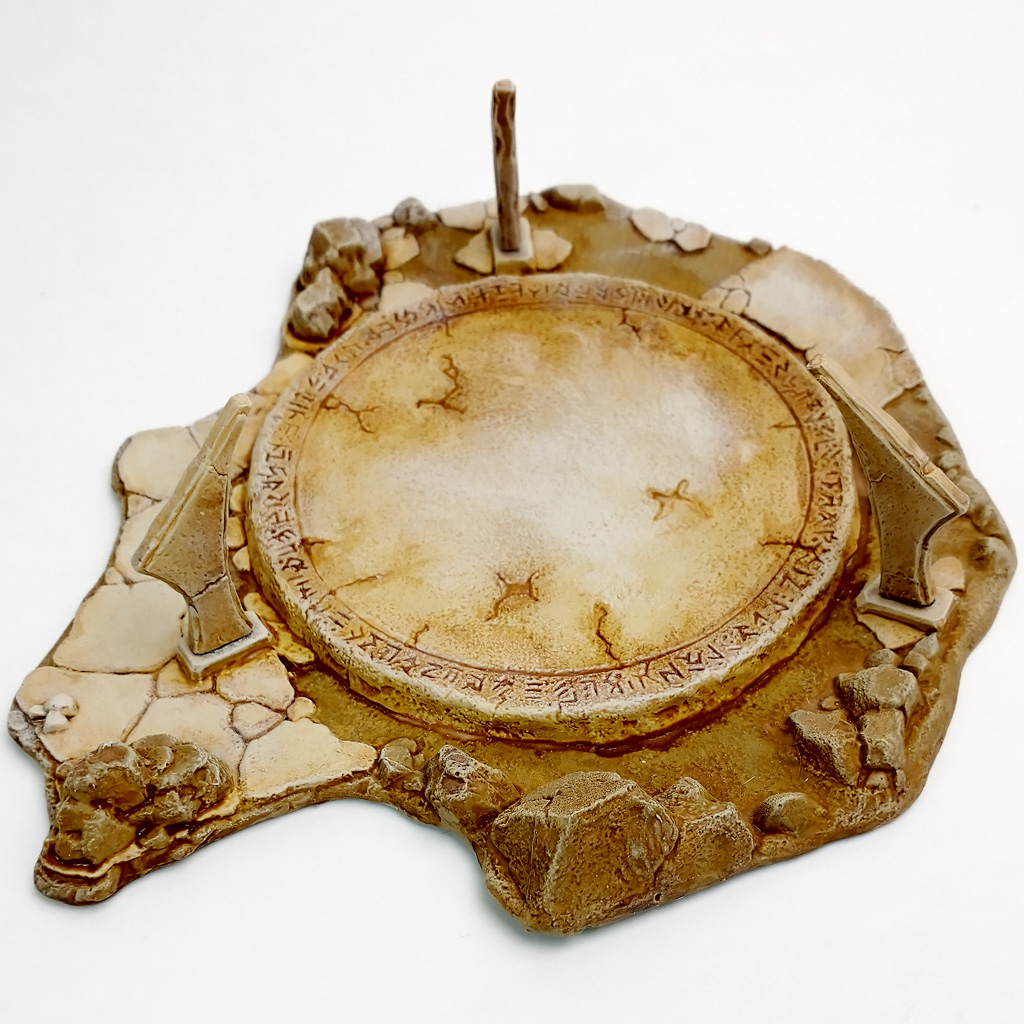
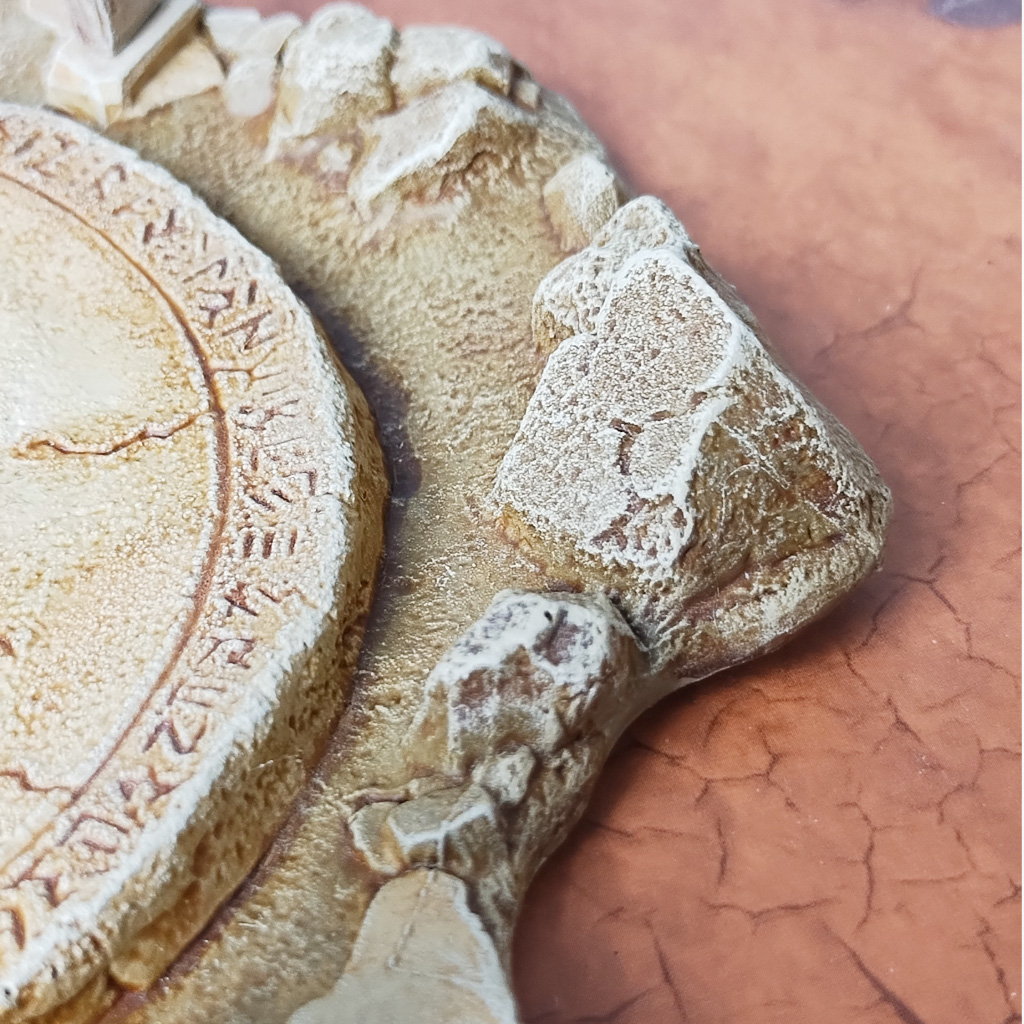
Highlight Painting the Arcane Circle
Another fun thing about painting scenery and terrain is that dry brushing can be a completely viable and natural-looking way to add highlights to your model. Highlights make details pop by capturing the illusion of a light source. While dry brushing can result in a chalky finish, which may not be desirable for heroes and figures, it offers a natural-looking method to blend and feather color and light onto the details of your terrain piece.
You’ll need:
- Using a medium dry brush, apply multiple light layers of Wraithbone (base) to the corners and edges of the stones parts of the model, the stone circle, and the three obelisks or spires.
Tip: While dry brushing works great at catching corners and edges, you can use a stippling technique to add texture, weathering, or wear patterns on flat surfaces. Give this method a try on some of the flat stones and the center of the circle!
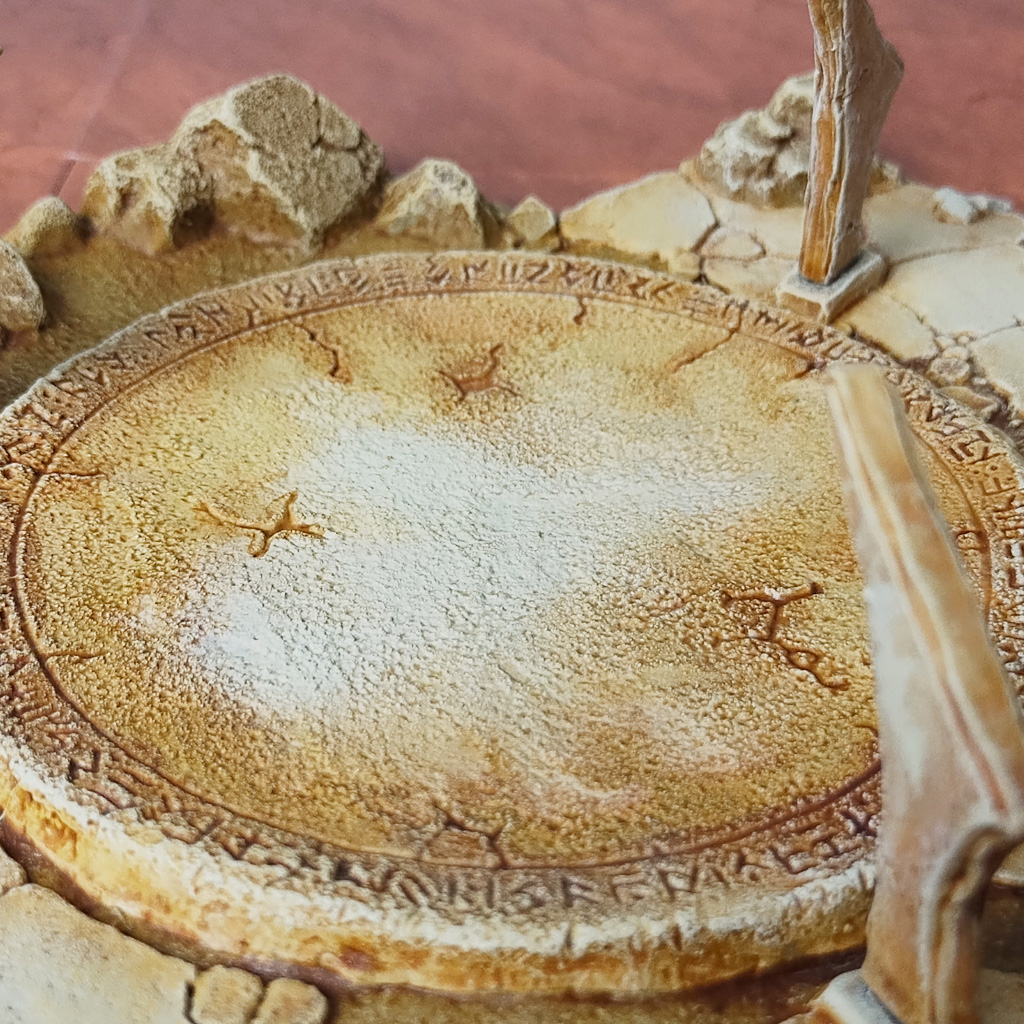
Spray Varnishing the Arcane Circle
If you’re new to model painting, specifically about varnishing, we invite you to explore our beginner’s guide: Coming Soon!
The last thing we want to do is lock in and protect our finished paint job with a spray varnish. I highly recommend Testor’s Dullcoat Spray Lacquer, as I’ve never had issues with frosting, clouding, bubbling or other strange texture effects.
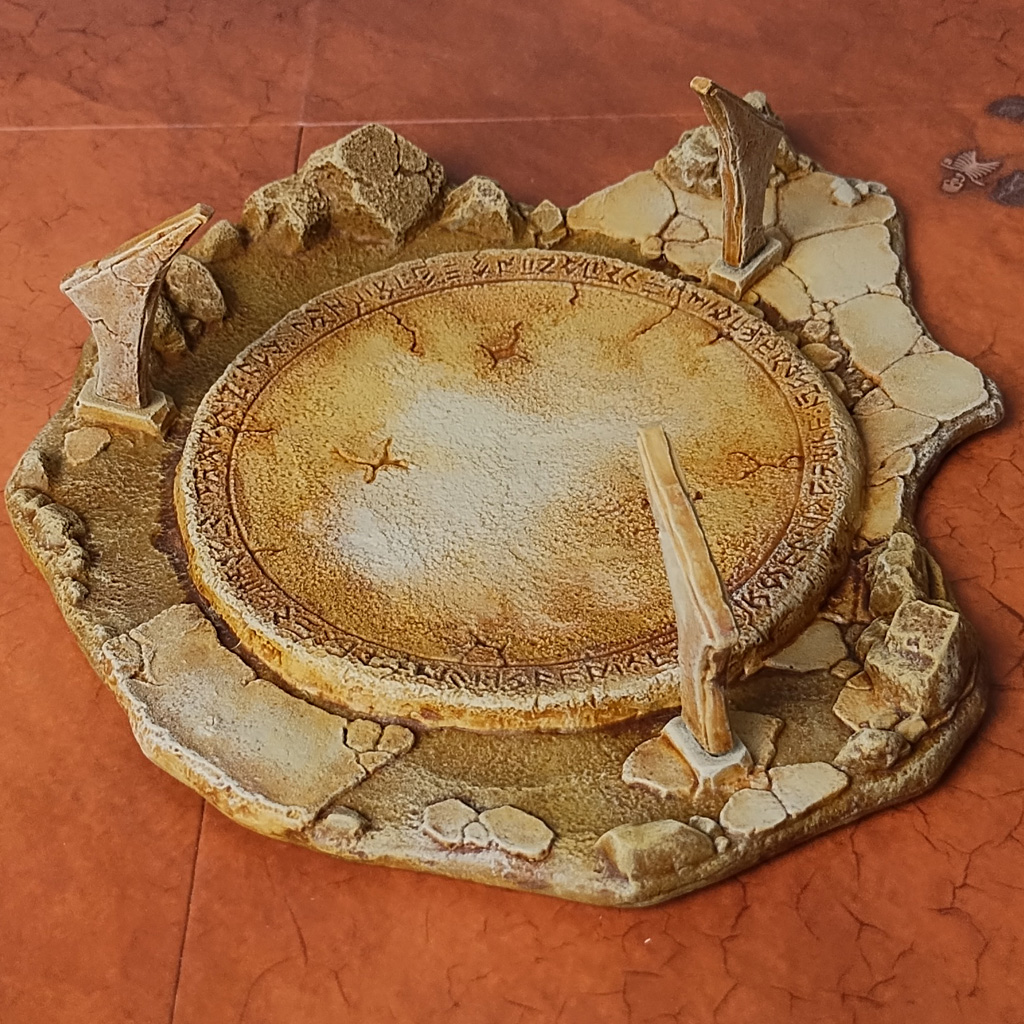
Final Thoughts: Concluding our Guide on How to Paint the Arcane Circle by Reaper Minis
In this guide on how to paint the Arcane Circle, we used easy steps to get a nicely finished and detailed terrain piece for a desert or Eastern Mediterranean style setting for an adventure or table-top game.
The steps included:
- Priming the Arcane Circle with Wraithbone (primer)
- Base coat painting the earth and dirt parts of the Arcane Circle with Zandri Dust
- Shade painting the Arcane Circle with Seraphim Sepia
- Layer painting the Arcane Circle by dry brushing Ushabti over the entire model and dry brushing Screaming Skull over just the earth and dirt parts of the model
- Highlight painting the Arcane Circle by dry brushing Wraithbone (base paint) structural stones and spires on the model and also stippling Wraithbone onto flat spaces to add weathering and wear.
- Varnishing the finished model with Testor’s Dullcoat Spray Lacquer to seal the paint job
My Thoughts and Experience with Painting the Arcane Circle
We sincerely hope this painting guide was helpful to you, or at least gave you some ideas on how to paint the Arcane Circle by Reaper Minis.
Honestly, I struggled to initially come up with a color scheme, hence the somewhat thick and gloppy prime job. Using Wraithbone primer was my second attempt at painting this model.
I really enjoy painting terrain and scenery pieces and basing models, and the excitement and possibilities can often leave me indecisive. Thankfully, this is a very inexpensive model that affords the opportunity to paint more of them to try new themes.
Arcane Circle Shopping List
- Wet Palette
- Paint Puck or Water Cup
- Primer: Citadel Wraithbone
- Citadel Medium Base Brush
- Citadel Medium Dry Brush
- Citadel Medium Shade Brush
- Paint Sealer: Dullcote Testors Spray Lacquer
- Citadel Colour Zandri Dust
- Citadel Colour Seraphim Sepia
- Citadel Colour Ushabti Bone
- Citadel Colour Screaming Skull or Vallejo Model Color Ivory
Happy Painting!


No responses yet